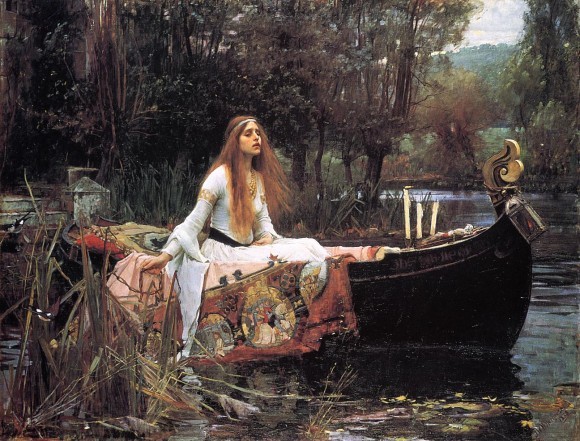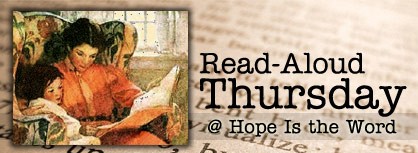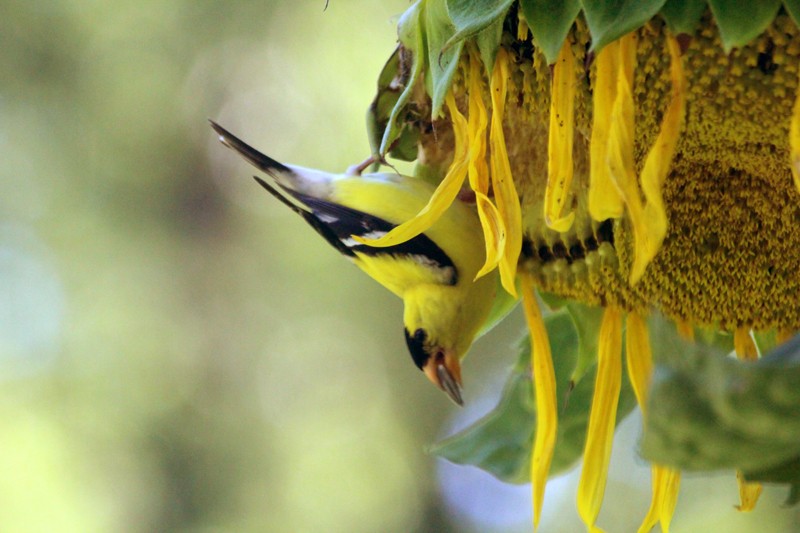Lady of Shalott
 This week, Tennyson’s “The Lady of Shalott” was on my 6th grader’s reading list. She read it, then last night I read it aloud to both girls and basically we all registered our questions and observations; I was too tired to do any more than that. But this morning, I got up and started investigating in my old anthologies and online, and I found some great resources. This entry at “Shmoop” addressed most all of our concerns in a very direct way. And a google image search revealed countless illustrations (including the above one, from Wikimedia), confirming what this site had said about it being a popular poem among illustrators.
This week, Tennyson’s “The Lady of Shalott” was on my 6th grader’s reading list. She read it, then last night I read it aloud to both girls and basically we all registered our questions and observations; I was too tired to do any more than that. But this morning, I got up and started investigating in my old anthologies and online, and I found some great resources. This entry at “Shmoop” addressed most all of our concerns in a very direct way. And a google image search revealed countless illustrations (including the above one, from Wikimedia), confirming what this site had said about it being a popular poem among illustrators.
I have certain Tennyson poems I’ve studied before, but this wasn’t one of them, and I loved several things about this process. I loved the way reading the poem aloud sounded (it’s also a nice predictable poem to talk about rhyme and rhythm). I loved the way we did an in-depth, impromptu literature lesson at breakfast, rehearsing the research process with seeming effortlessness. I loved seeing my youngest sitting with her nose in my huge thick anthology, her Cheerios set to the side, poring over the poem and then getting pulled into the next one, “The Lotus-Eaters.” But most of all, I loved how much this was an example of literature driving the study of literature — “The Lady of Shalott” is Anne of Green Gables’ FAVORITE, after all, and “The Lotus-Eaters” is one that Laura Ingalls reads in the Christmas gift she finds ahead of time by accident. In some way we find ourselves entering into a deeper identification with these two loved characters even as we meet a new one in Tennyson’s mysterious, dream-like poem.
Not all of our schooling has this quality of delight, but it’s wonderful when it does. (*Edited to add: not all of our schooling is this off-the-cuff, either! This is basically a supplemental reading list, and not one of our core assignments. So I’m comfortable with the spontaneous way this all came together, even though it’s not the way I usually do things. In fact, I was planning to come back to this in a more structured way later on — which is part of why it was delightful that it came together this way.) I came upon this W.H. Auden quote in Alan Jacobs’ The Pleasures of Reading in an Age of Distraction, and you’ll understand what I mean when I say today feels like a holiday:
When one thinks of the attention that a great poem demands, there is something frivolous about the notion of spending every day with one. Masterpieces should be kept for High Holidays of the Spirit.
I’m sharing this at Read-Aloud Thursday, hosted by fellow Anne-fan Amy at Hope Is the Word. Be sure and drop by there to glean ideas about possible read-alouds from others!




5 Comments
Alice@Supratentorial
Last week we were doing the same thing with The Highwayman…also inspired somewhat by Anne.
Amy
Well, off the cuff or totally orchestrated, it’s wonderful, as evidenced by your dd’s total disregard for her Cheerios! ;). I LOVE it!
Ruth
This post makes me very happy! You almost sound like you’re apologizing for this being unplanned. (Maybe I’m misreading.) I think it is GREAT that it is so spontaneous. Isn’t so much of the best learning like that? You are a wonderful teacher.
Janet
I just didn’t want to imply that I never plan! :-) But thank you for affirming my gut feeling — that some of the very best moments for them and for me are these spontaneous ones!
Barbara H.
It’s neat when enjoyment of learning goes beyond “school” to “life.” I love it, too, when reading about a work in one setting leads to studying it out more fully.